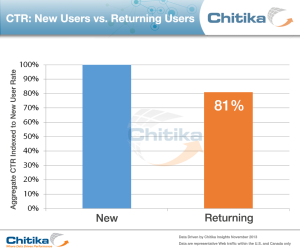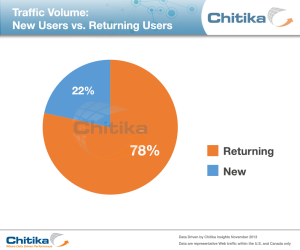Monetizing Your Website’s Real Fans & The “Bandwagon”
In the New England area, Red Sox fever came to a head once again with the October World Series victory this year, and it was clear that many of the fans celebrating were of the “bandwagon” variety. Winning championships turns sporting events into cultural events; non-fans into casual fans; and casual fans into actual fans. […]
In the New England area, Red Sox fever came to a head once again with the October World Series victory this year, and it was clear that many of the fans celebrating were of the “bandwagon” variety. Winning championships turns sporting events into cultural events; non-fans into casual fans; and casual fans into actual fans.
Most marketing is targeted toward new fans, and why not? Real fans tuned in when the team was bad. They own jerseys of players that are long gone. They jump at any chance to see a live game. If you view your website like a championship team, there’s a need to recognize that your loyal fans and your “bandwagon” fans have different interests, and therefore monetize in vastly different ways.
Understanding your audience is fundamental for both commerce and communication — so whether your goal in placing ads on your site is solely to make money, or if revenue is secondary to the content that you create, it’s important to understand who is visiting your site to give them the best experience that you can possibly provide.
Who’s Clicking On Your Site’s Ads?
The Chitika Insights team analyzed hundreds of millions of impressions over the month of October, and specifically examined CTR by cookie status: new visitors versus returning visitors (i.e., users who have visited the website twice within a given month). The results demonstrated that, like most championship teams, targeting strategies are more effective with new visitors than they are with regular readers — most likely because the content is what draws regular visitors to a site.
The online ad CTR exhibited by new visitors is 24% higher than it is for return visitors across Chitika’s aggregate network traffic.

Knowing that most sites don’t fit neatly into any strict categories, using the general classifications of “mostly new” traffic, and “mostly regular” traffic, we can explore some ways to match what you provide to what your audience is looking for.
If your focus is generating the maximum amount of ad revenue from your site, then there are two obvious steps to be taken in order to meet this goal:
- Drive traffic to your site
- Optimize the CTR for that traffic

Seventy-eight percent (78%) of the impressions in the study came from returning visitors to websites, so this is a clear majority of the traffic on the web, but also the type of traffic which has a lower tendency to click on ads.
SEO is often a go-to strategy to drive traffic to a website; however, a Chitika Insights study showed that search engine results positioning does have its limitations — being in the top spot doesn’t always translate to the most dollars. Adding in “sponsored content” links or becoming part of shared content networks like Outbrain — which links from your site to other related sites on the web — is another strategy that could drive valuable traffic to your site.
Another recent Chitika Insights study showed that traffic coming directly from another site (and not a search engine) has a higher ad CTR than traffic that comes directly to your site (your likely “regular visitors”).
Once your site is generating traffic, there are many effective strategies that have been proven to maximize CTR for sites with mostly new visitors. A previous Chitika Insights study showed that CTR is significantly higher for ads displayed “below the fold.” In previous posts to this column, my colleague has written about targeting toward certain screen aspect ratios, device types, and operating systems.
If your site is content-driven, but you use ad revenue to make extra money (or you view it as a necessary evil to keep the lights on), then your focus needs to be improving the user experience. This involves knowing:
- How users typically interact with your site in terms of number of pages viewed, time on site, typical “user flow” through the site, scrolling behavior, etc.
- The behavior differences between regular visitors and new visitors
Answering these questions (via services like Google Analytics and CrazyEgg for example) can help you develop the strategy that allows you to optimize the user experience while monetizing in the smartest way possible.
Chitika Insights studies have shown that people that come to your site directly, and/or are regular visitors to the site, are less likely to click on ads, so why even show them? Using a cookie to recognize your regular readers and correspondingly minimizing the ads shown on your page to those readers could be an effective strategy. By showing fewer ads, you will need to use different strategies to monetize.
Some proven strategies include picking the keywords with higher CPCs where applicable; or the use of in-text advertising and/or targeting that is highly focused on the article’s content. Whatever strategy is used on this type of site, placement is key. In order to keep readers engaged with your content for the maximum amount of time, they need to scroll below the fold.
Regardless of vertical or audience size, measuring and understanding your site’s traffic mix should be a key to developing your on-site ad marketing strategy. In New England, old Red Sox (blue hat) fans call the new fans “pink hat fans.” Despite the negative connotation, to the Red Sox organization, both groups are important to its bottom line. Understanding the mix of pink and blue has allowed teams like the Red Sox to optimize content (i.e., the team) and revenue.
Contributing authors are invited to create content for MarTech and are chosen for their expertise and contribution to the search community. Our contributors work under the oversight of the editorial staff and contributions are checked for quality and relevance to our readers. MarTech is owned by Semrush. Contributor was not asked to make any direct or indirect mentions of Semrush. The opinions they express are their own.
Related stories